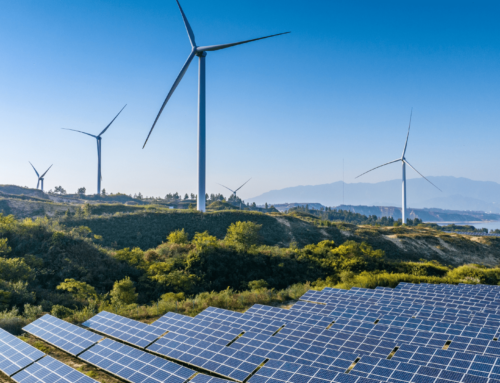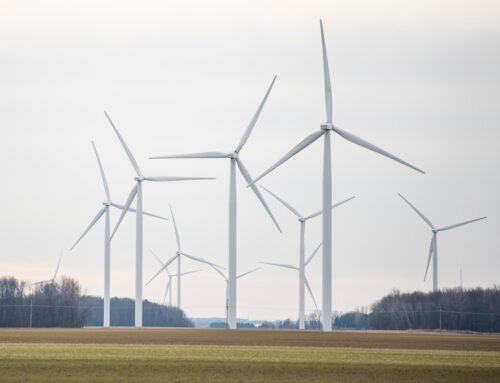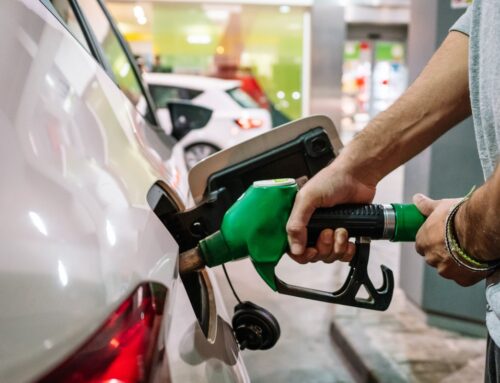Climate law sparks swing-state boom in clean energy manufacturing
October 16, 2024
President Joe Biden’s landmark climate law is fueling a rise in clean energy manufacturing across seven swing states that could decide November’s presidential election.
An Atlas Public Policy analysis produced for POLITICO’s E&E News found that those states — Arizona, Nevada, North Carolina, Georgia, Michigan, Wisconsin and Pennsylvania — are on track to host 44 percent of the clean energy manufacturing projects announced since the climate law was signed in 2022.
It’s still early days. Much of the Inflation Reduction Act’s $370 billion in clean energy funds remains unspent, and its incentives haven’t yet had their full effect on the economy.
But analysts agree that states in the Rust Belt and Sun Belt are seeing a disproportionate share of the law’s benefits, as factories to make electric cars and their batteries flock to long-standing centers of U.S. auto manufacturing.
Jack Conness, a policy analyst for climate research firm Energy Innovation, found that swing states will host 48 percent of newly announced clean energy manufacturing projects, representing 41 percent of the sector’s new jobs. Business group E2 estimates the seven states will host more than half of the $119.2 billion that private companies are investing in post-IRA clean manufacturing projects and 43 percent of the resulting jobs.
Like the Atlas Public Policy analysis, they tell the same general story: a lot of new manufacturing investment since the climate law’s passage is going to states that could choose the next president. And those states could lose more than most if former President Donald Trump makes good on his promise to scrap key provisions of what he calls “the Green New Scam.”
Democrats and advocacy groups worry that voters in swing states aren’t sufficiently awareof the climate law’s benefits to their state economies. A University of Maryland and Washington Post poll this summer showed most Americans didn’t know the law well but supported its main policies.
Michael Hanmer, director of UMD’s Center for Democracy and Civic Engagement, which sponsored the poll, said Democrats should have done more to inform voters about the law’s economic upside. Vice President Kamala Harris has largely avoided touting the law on the campaign trail.
“These direct benefits are things that you would think they would be trying to promote pretty heavily,” he said. “Especially if — either naturally or with a little bit of strategic guidance — it happens to be in places where the election is going to be a close call.”
The three analyses look at private investment in clean energy manufacturing, which has boomed in the wake of the Inflation Reduction Act’s rich array of clean energy incentives and uncapped credits. Those range from Energy Department loans and loan guarantees to tax credits for advanced manufacturing, minerals development and hydrogen.
Each analysis differs in scope and methodology.
Atlas didn’t include semiconductor manufacturing, for example, while E2 didn’t track critical mineral development. Conness of Energy Innovation tracked only manufacturing for electric vehicles, batteries, solar and wind. He excluded hydrogen, while Atlas and E2 counted the manufacturing of hydrogen electrolyzers and fuel-cell technology.
“Tracking these investments is more of an art than a science,” Conness said.
So far, the climate law has spurred more private sector investment in manufacturing than in power generation. E2’s Clean Economy Works tracker shows that more than 90 percent of newly announced projects since Aug. 16, 2022, have been for manufacturing compared to just over 7 percent for generation.
The climate law created a new production tax credit (PTC) — known as 45X — to encourage the production and sale of renewable energy equipment and components, as well as the development of critical minerals. Manufacturers have been able to claim that credit for goods produced and sold after Dec. 31, 2022.
The IRA also extended and modified production and investment tax credits for renewable power. But the PTC for renewables only kicks in once projects are connected and selling power to the grid, a process that can take years. Thus, some of law’s incentives for clean generation may be delayed, experts say.
Investment boom
Not all swing states have seen the same influx of private investment since the IRA.
“The Southeast states are dominating,” said Michael Timberlake, E2’s communications director.
Georgia and North Carolina lead the nation in all three analyses of new clean energy manufacturing investments.
Atlas Public Policy’s Clean Economy Tracker and Conness of Energy Innovation both put Georgia in the No. 1 slot, estimating that the state attracted $19.6 billion and $16 billion in IRA-backed manufacturing projects, respectively. They show North Carolina in second place — with Atlas estimating that the state is home to $16.7 billion in post-IRA clean manufacturing announcements and Energy Innovation putting that investment at $15.6 billion.
E2’s analysis shows North Carolina in the lead at $21 billion in new clean energy manufacturing commitments and Georgia in second place at approximately $15.3 billion.
Michigan has also seen a healthy share of clean energy manufacturing announcements since August 2022, the analyses show — though less than Georgia, North Carolina and some neighboring states. Atlas estimates that $14.6 billion in new manufacturing investments have been announced in Michigan, while Energy Innovation puts that number at $11.3 billion and E2 shows approximately $12 billion.
Arizona and Nevada, meanwhile, are in the top 10 states nationwide for new clean energy manufacturing projects. Estimates from the three analyses range from $6.5 billion to $7.6 billion in announced projects for Arizona and from $4.7 billion to $6.7 billion for Nevada.
Wisconsin and Pennsylvania rank far below their swing-state peers for private sector investment in clean energy manufacturing, though they have been major beneficiaries of federal dollars from the IRA and 2021 infrastructure law.
The consolidation of private manufacturing dollars contrasts with the federal clean energy funds flowing from the IRA into states.
Those dollars — which include EPA grants for things like community solar in underserved neighborhoods — are distributed more evenly to red, blue and purple states. A separate analysis by Atlas Public Policy shows that states with the smallest populations tend to get the most money per capita, led by Washington, D.C., Alaska, Vermont, Montana and Maine.
Recruiting industry
IRA-backed industries aren’t crowding into swing states because they’re electoral kingmakers. Instead, the data suggest that green manufacturing investment is a regional story.
The Upper Midwest and Southeast are handily winning the early race for new IRA-backed manufacturing investment.
Analyses by Atlas and Energy Innovation show the six states of the Upper Midwest — the three “Blue Wall” swing states of Michigan, Pennsylvania and Wisconsin, plus Republican-leaning Ohio and Indiana — have attracted about 30 percent of post-IRA clean energy manufacturing investment. Seven Southeastern states — Georgia, North Carolina, South Carolina, Alabama, Mississippi and Kentucky — have attracted between 42 and 49 percent of such investment.
That’s because those regions are long-standing centers of U.S. auto manufacturing. And far and away the largest share of post-IRA clean energy manufacturing announcements — 92 percent, by E2’s count — have been in electric transportation.
“They’ve built infrastructure over the years in those two areas, like transportation, accessibility of waterways and railway infrastructure,” said Conness. “It just makes business sense to find yourself in an area that’s already close to other manufacturing businesses, close to infrastructure that’s already built to accommodate the decisions that they’re making or the products that they’re about to make.”
The auto manufacturing powerhouses of the upper Midwest and Southeast may have empty factories or greenfields that can be easily converted into factories for building electric vehicles, and charging equipment or batteries. They also have skilled workforces. And their motivated state governments have spent decades shaping zoning, permitting and, in some cases, labor laws to entice manufacturing to their states.
“In many cases, these are states that are doing their own versions of industrial policy,” said Barry Rabe, a professor of environmental policy at the University of Michigan.
”If a firm indicates that they’re thinking about creating a new plant in the U.S., you often have very aggressive interstate competition,” he said. “States have been at this game for a long time, and there’s not necessarily a correlation in terms of liberal, conservative, Republican and Democrat, in terms of how much an effort a state will make to recruit or try to incentivize an industry to locate within their boundaries.”
Conness likened Michigan Democratic Gov. Gretchen Whitmer and Georgia Republican Gov. Brian Kemp to University of Michigan head football coach Sherrone Moore and University of Georgia head coach Kirby Smart, scouting for green manufacturing projects instead of promising athletes.
Whitmer signed legislation boosting Michigan’s clean energy goals and streamlining permitting for projects. Kemp, an erstwhile critic of the IRA, has pledged to make Georgia an “electric mobility capital.”
“What we’ve seen from these two and their teams — they take active recruiting leadership roles in their states,” Conness said. “They’re the ones reaching out to businesses. They’re the ones having the meetings. They’re the ones trying to get these things across the finish line.”
Search
RECENT PRESS RELEASES
Related Post



